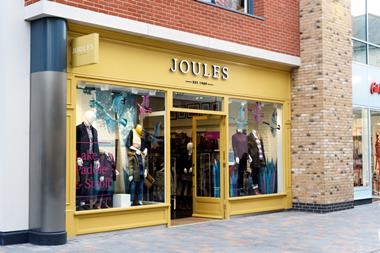Joules’ sales jumped 17.6% to £113.1m in its first half as it raises profit expectations.
Strong retail sales drove the revenue rise, with sales in its stores up 21.2%, compared with a 8% rise in wholesale.
The retailer said it expects underlying pre-tax profits to be “slightly ahead” of initial expectations for the half to November 25.
Joules said its performance reflected the strength of the Joules brand, the appeal of its products and the flexibility of its ‘total retail’ model, the term it uses to describe its cross-channel business.
Ecommerce performed particularly well over the half and now accounts for almost 50% of all retail sales.
Joules chief executive Colin Porter said: “This performance, which is ahead of our initial expectations for the period, is testament to the strength of the Joules brand, the engagement of our loyal customers with our product collections, and our fantastic teams.
“In the UK, our ‘total retail’ cross-channel model, underpinned by investment in infrastructure, has proven to be well suited to today’s rapidly changing consumer shopping behaviours. In addition, our international wholesale business continues to make excellent progress by both increasing sales to existing accounts and developing new accounts.”
Joules moved some of its UK wholesale accounts to a concession model during the period, which it said provided “greater future trading flexibility”.
It also acknowledged the “rapid growth” of its international business, which now accounts for 16% of Joules’ sales.
Brexit plans
The retailer warned that trading conditions in the UK would remain challenging in the near term due to continued macroeconomic uncertainty, rapidly changing consumer shopping behaviours and a highly competitive environment.
It said “contingency plans” have been put in place to mitigate the expected disruption that could arise in the event of a ‘hard Brexit’.
This includes establishing an EU-based third-party warehouse, scheduling earlier inbound product deliveries for spring 2019 ranges, preparing for increased administrative activities, and hedging more than 12 months forward.


























No comments yet